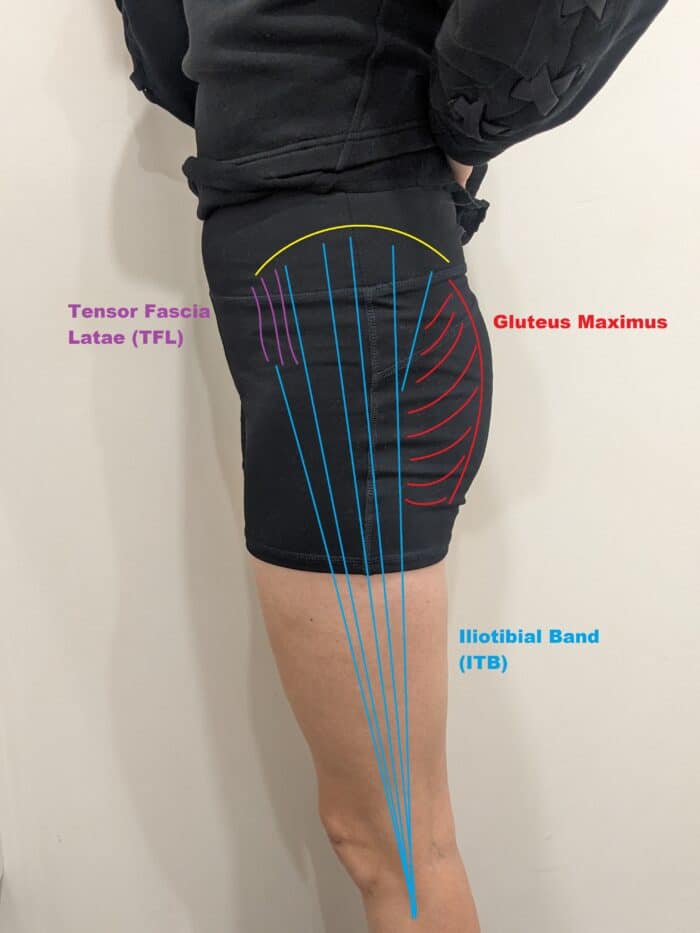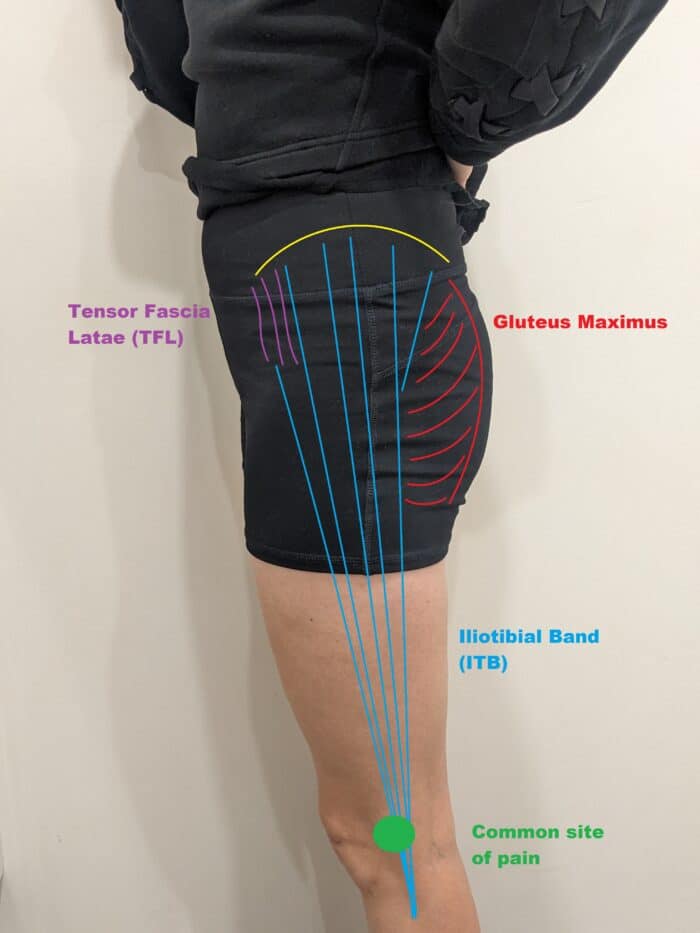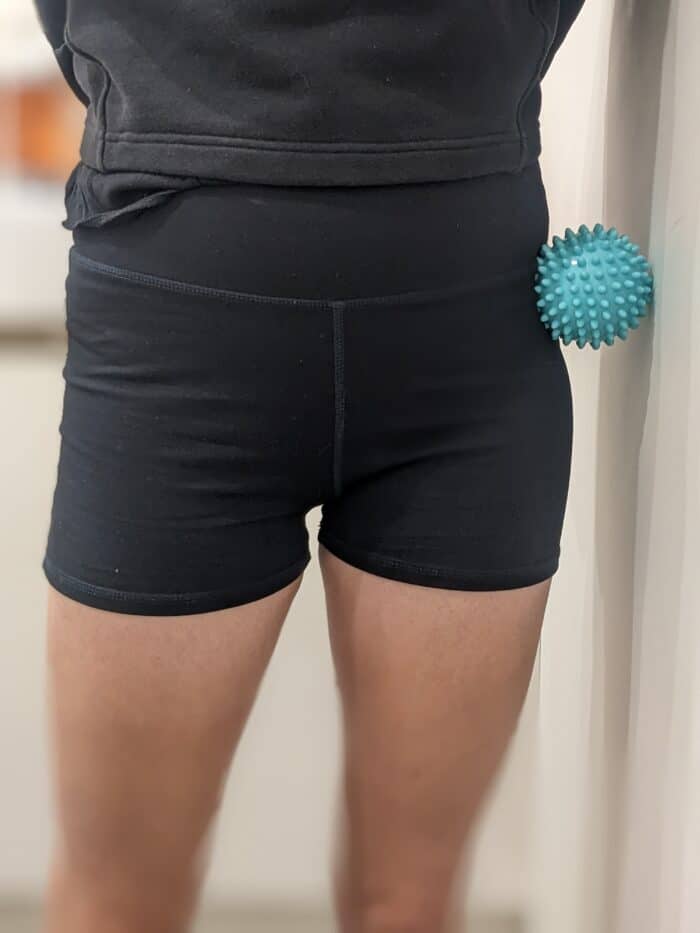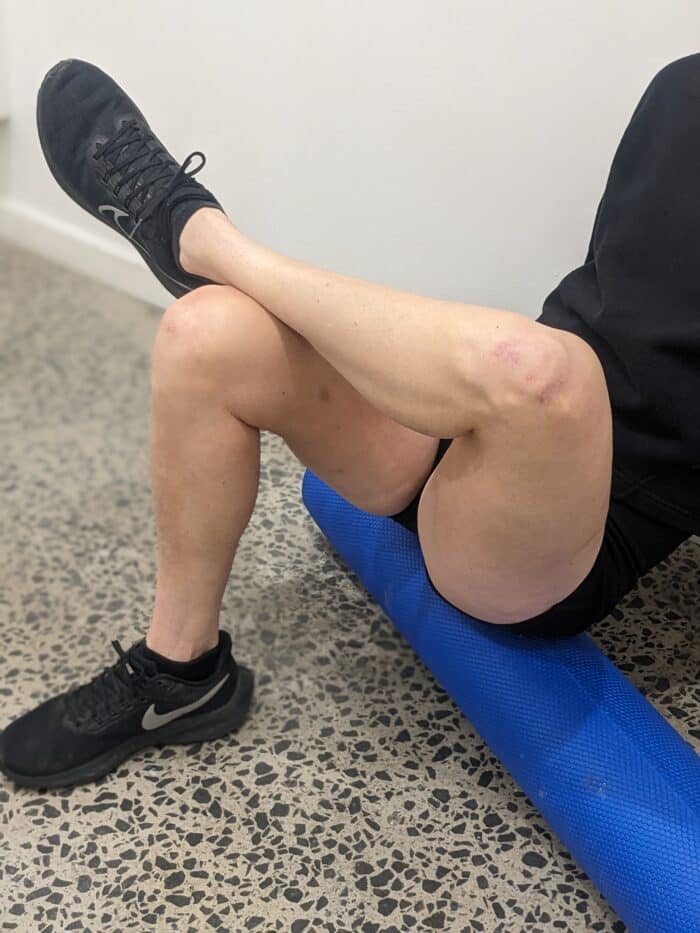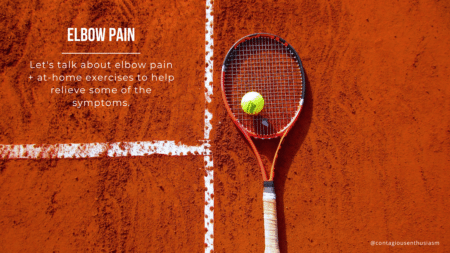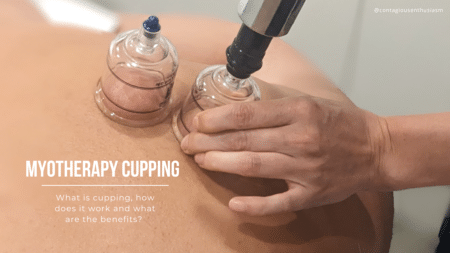Iliotibial Band Friction Syndrome (ITBFS)

Have you ever had pain on the outside of your knee? Ever heard of the ITB? Are the runners and cyclists in your life always complaining about it? You may have been feeling the symptoms of Iliotibial band friction syndrome (ITBFS)
What is the ITB?
The Iliotibial band (ITB) is a big belt-like band of connective tissue that runs down the outside of your leg. It runs from the hip, down over the knee and connects into the top of the shin. Its main job within the body is pelvis stability and helps with the posture of the pelvis.
Though the most common symptom is lateral knee pain, ITB friction syndrome is actually categorised more accurately as a hip condition. This is due to the fact that the muscles that connect into the ITB are ones that control the hip. They are the gluteus maximus and tensor fascia latae (TFL) muscles. By loosening off these muscles it helps to relieve the pressure and discomfort felt at the knee.
Did you know?
The iliotibial band is mainly composed of collagen fibres. Collagen is one of the strongest proteins found in nature!
While made up of strong collagen fibres there are also elastin fibres within the ITB which helps it act as a spring and helps to absorb force and allow for propulsion in things like running or walking.
The reason it causes knee pain if it’s a problem coming from the hip?
The ITB thickens as it passes the knee. When the knee is extended the thickened band sits in front of a bony part (lateral epicondyle) of the knee but when it’s flexed it slips behind this bony part. With the repetitive nature of activities such as running and cycling they require the consistent flexing and extending of the knee. this then means the band is flicking over the boney part more regularly. If the muscles (TFL and/or gluteus maximus) are tight or there is dysfunction/weakness at the hip and pelvis it then pulls on the ITB causing the thickened portion at the knee to rub against the lateral epicondyle causing knee pain.
Did you know?
The pressure needed to lengthen your Iliotibial Band is approximately 2000 pounds of force to create even 1% of change in the length!
Treatment:
- Protect from any movements that might aggravate the area.
- Elevate to affected side to help with the lymphatic fluid movement which helps if there’s any swelling.
- Reduce your training load until pain subsides and then start back slowly!
- At home exercises. Some easy ones below will help get you started.
- Talk to one of our lovely myotherapists about how they can help.
At home exercises to help prevent/care for ITBFS:
Self-release of TFL
- Using a spiky ball (or golf ball, foam roller) find the boney point at the front of your hip. Drop a little below and backward of this boney spot. Place the ball or roller here and apply pressure. You can do this against the ball with your hand, a wall or the floor. The intensity of feeling will increase the firmer the pressure you place over it.
Foam roller glute max
- Sitting down on the floor with your knees bent. Place your hands out to keep you balanced. Cross one ankle over the opposite knee.
- This position is a great stretch for your glutes but if you can slide a foam roller underneath so it is horizontal across your glutes. Lean into the side with your foot off the ground and rock back and forth for a great glute release.
Kneeling hip flexor stretch
- Kneel down (place a cushion under your knee if the pressure is too much), place one foot out in front of you in a lunge-like position, tuck your tailbone under and move forward with your hips until you feel a stretch through the front of your body.
- You can add in an overhead reach using the arm that is on the same side of the kneeling leg and reaching up and over your head for a full side of body stretch. Hold for as long as you feel the stretch then repeat a few times before swapping and repeating on the other side.
Glute med strengthening exercises – Clams.
Lying on your side with both your knees bent into a 45° angle, keep your ankles together and your core engaged, raise the top knee away from the other as high as you can without letting your pelvis or lower back move, hold at the top of the movement then return to starting position, repeat for 10 and then swap and repeat on the other side.
Core engagement is a key to all exercises, especially strengthening ones so that the pelvis is stable and the lower back is supported. Check out our blog post with the details on how to engage it properly.
Post written by Laura York (Myotherapist)
Click here to book.
